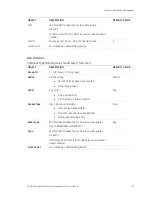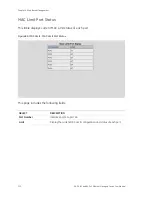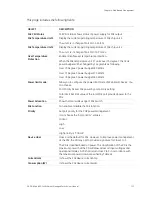
Chapter 4: Web-Based Management
124
GE-DS-82 and 82-PoE Ethernet Managed Switch User Manual
Figure 86: 802.1x device role
Client-
the device (workstation) that requests access to the LAN and switch services
and responds to requests from the switch. The workstation must be running 802.1X-
compliant client software such as that offered in the Microsoft Windows XP operating
system. (The client is the supplicant in the IEEE 802.1X specification.)
•
Authentication server-performs the actual authentication of the client. The
authentication server validates the identity of the client and notifies the switch
whether or not the client is authorized to access the LAN and switch services.
Because the switch acts as the proxy, the authentication service is transparent to
the client. In this release, the Remote Authentication Dial-In User Service (RADIUS)
security system with Extensible Authentication Protocol (EAP) extensions is the
only supported authentication server; it is available in Cisco Secure Access Control
Server version 3.0. RADIUS operates in a client/server model in which secure
authentication information is exchanged between the RADIUS server and one or
more RADIUS clients.
•
Switch (802.1X device)-controls the physical access to the network based on the
authentication status of the client. The switch acts as an intermediary (proxy)
between the client and the authentication server, requesting identity information
from the client, verifying that information with the authentication server, and
relaying a response to the client. The switch includes the RADIUS client, which is
responsible for encapsulating and decapsulating the Extensible Authentication
Protocol (EAP) frames and interacting with the authentication server. When the
switch receives EAPOL frames and relays them to the authentication server, the
Ethernet header is stripped and the remaining EAP frame is re-encapsulated in
the RADIUS format. The EAP frames are not modified or examined during
encapsulation, and the authentication server must support EAP within the native
frame format. When the switch receives frames from the authentication server,
the server's frame header is removed, leaving the EAP frame, which is then
encapsulated for Ethernet and sent to the client.
Summary of Contents for 82-POE
Page 26: ...Chapter 2 Installation 22 GE DS 82 and 82 PoE Ethernet Managed Switch User Manual ...
Page 148: ...Chapter 5 Console Management 144 GE DS 82 and 82 PoE Ethernet Managed Switch User Manual ...
Page 212: ...Chapter 6 Command Line Interface 208 GE DS 82 and 82 PoE Ethernet Managed Switch User Manual ...
Page 226: ......
















































